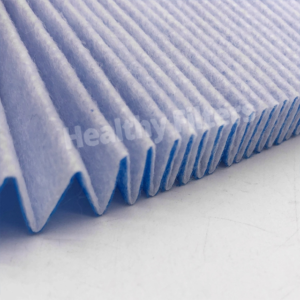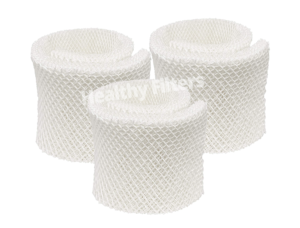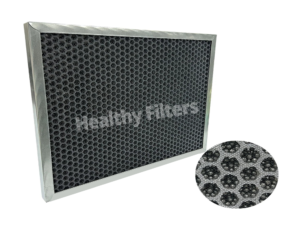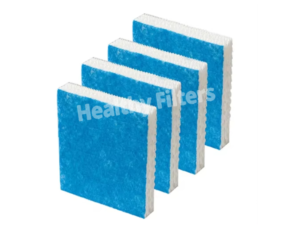High temperature fiberglass panel filter is an air purification equipment designed for extremely high temperature and corrosive environment. It uses specially treated glass fiber material and combines multi-layer composite structure. It can operate stably at continuous high temperature of **200℃ to 500℃**, and efficiently intercept dust, smoke, molten particles and harmful gases. It is widely used in industrial scenes such as metallurgy, chemical industry, power and food processing. It is the core component of high temperature flue gas treatment and equipment protection.
Core structure and material technology
Glass fiber substrate
High temperature resistant fiber: high purity alkali-free glass fiber (E-glass or S-glass), cured by silicone or ceramic adhesive, with a temperature resistance of 500℃ (short-term up to 600℃), and excellent thermal shock resistance.
Surface treatment: coated with polytetrafluoroethylene (PTFE) or silicone resin to enhance hydrophobicity (contact angle>120°) and anti-adhesion (reduce tar and asphalt adhesion).
Composite structure design
Gradient filter layer:
Support layer: stainless steel mesh or ceramic fiber cloth, providing mechanical strength and deformation resistance;
Filter layer: glass fiber gradient density design (gram weight 150-500g/㎡), intercepting particles from coarse to fine (PM10 to PM1.0);
Functional layer (optional): add catalytic oxidation coating (such as MnO₂) to decompose VOCs or NOx.
Sealed frame: aluminum or galvanized steel frame, temperature resistance above 300℃, with ceramic fiber gasket to prevent high temperature air leakage.
Core performance and advantages
Features Parameters/performance Application value
Heat resistance Continuous working temperature 200℃-500℃, short-term tolerance 600℃ Suitable for high temperature scenes such as smelting furnaces, boiler exhaust, drying lines, etc.
Filtration efficiency EN 779 F9-H11 (PM1.0 filtration efficiency ≥85%-95%) Meet ultra-low emission standards (such as GB 13223)
Chemical corrosion resistance Acid and alkali resistance (pH 3-11), resistance to sulfur oxide (SOx) corrosion Chemical, waste incineration and other highly corrosive flue gas treatment
Low resistance design Initial pressure difference ≤150Pa (@500℃), energy saving 15%-30% Reduce fan energy consumption and reduce operating costs
Long life cycle Support pulse backwash cleaning, service life 2-5 years Reduce downtime maintenance frequency and improve production efficiency
Typical application scenarios
Metallurgical industry:
Aluminum electrolytic cell, ladle refining furnace smoke filtration, capture fluoride, metal oxide particles;
Foundry workshop high temperature smoke purification, protect workshop air quality.
Power and energy:
Coal/biomass boiler flue gas dust removal, intercept fly ash and unburned carbon particles;
Gas turbine intake filtration, prevent salt spray and dust from eroding blades.
Chemical and environmental protection:
Petrochemical cracking unit tail gas treatment, adsorption of tar and carbon black;
Hazardous waste incinerator high temperature flue gas purification, reduce dioxin emissions.
Food processing:
High temperature oven, frying line exhaust system, intercept grease smoke and coking products;
Starch drying tower dust recovery, avoid explosion risks.
Selection and maintenance guide
Precise selection parameters
Temperature adaptation:
200℃-350℃: standard glass fiber + PTFE coating;
350℃-500℃: high silica glass fiber + ceramic adhesive.
Pollutant characteristics:
Sticky particles: select anti-stick coating (PTFE) or smooth surface treatment;
Acidic gas: use acid-resistant glass fiber (such as C-glass).
Intelligent maintenance strategy
Cleaning technology:
Online pulse cleaning: compressed air (0.4-0.6MPa) timed backblowing to restore filtration performance;
Mechanical vibration: suitable for frame fixed installation scenarios.
Status monitoring:
Install differential pressure sensor and temperature probe to warn of blockage or overheating risks in real time;
AI algorithm predicts filter element life and optimizes replacement cycle (normal 2-3 years, high load 1-2 years).
Replacement standard:
Pressure difference ≥ 2.5 times the initial value (usually >375Pa);
Fiber layer carbonization or fracture area >10%.
Technological innovation and industry trends
Nano coating technology: Graphene composite coating improves PM0.3 filtration efficiency to 99%, and simultaneously catalyzes the degradation of VOCs;
Modular quick-install design: supports tool-free disassembly and assembly, reducing the risk of maintenance in high-temperature environments;
Carbon neutral integration: coupled with CO₂ adsorption layer to achieve high-temperature flue gas carbon capture and resource utilization.
High-temperature glass fiber plate filters have become the gold standard for industrial high-temperature flue gas treatment with **”extreme temperature resistance, high-efficiency interception, and long life”** as their core competitiveness. From metal smelting to food baking, it is not only a “high-temperature shield” for equipment, but also an important technical guarantee for enterprises to achieve green production and sustainable development.





